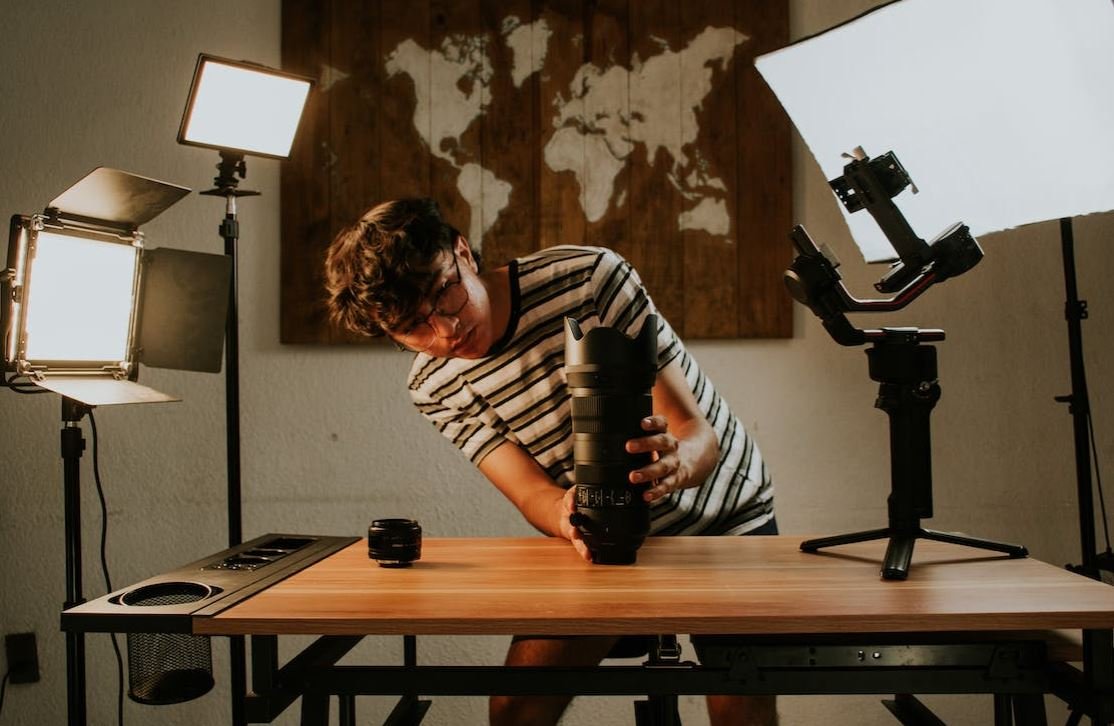What Footage Is Real in Titanic?
The 1997 blockbuster movie “Titanic” directed by James Cameron is known for its gripping story and stunning visuals. However, many viewers often wonder how much of the footage in the film is real and how much is recreated or CGI. In this article, we will explore the mixture of real and digital footage used in the making of Titanic.
Key Takeaways
- The majority of the underwater footage in Titanic is real, captured during dives to the actual wreckage.
- The exteriors of the Titanic were mainly recreated using CGI, with some real-life models for certain scenes.
- The interior shots of the ship were largely filmed on a meticulously reconstructed replica set.
- Some passage and deck scenes were filmed on a full-scale replica of the ship.
- A combination of practical effects, miniatures, and CGI were used for various sinking sequences.
Many scenes in the movie were carefully recreated or digitally enhanced to bring the Titanic’s story to life. For certain shots, filmmakers utilized real footage of the wreckage from dives conducted in the years leading up to production. This authentic footage serves as a haunting reminder of the tragic event.
The Mixture of Real and Digital Footage
When it comes to capturing the grandeur of the Titanic itself, a combination of real-life models, CGI, and practical effects were employed. While some exterior shots of the ship were created using CGI, real-life models were also used to better convey the scale and detail of the vessel.
The interior shots were predominantly filmed on a replica set that painstakingly recreated the ship’s luxurious cabins, grand staircase, and other iconic locations. Many of these intricately crafted sets were designed to match historical photographs and survivor accounts, adding an extra layer of authenticity to the movie.
For certain scenes set on the ship’s decks and passageways, a full-scale replica was constructed to provide an immersive experience for the actors and to allow for capturing dynamic shots. This replica ship was built to match the original plans of the Titanic, ensuring accurate scale and details.
The Sinking Sequences: Combining Practical Effects, Miniatures, and CGI
One of the most dramatic elements of Titanic is the depiction of its sinking. Filmmakers combined various techniques to create a sense of realism and tragedy. In some instances, practical effects and miniatures were used to portray rapidly flooding rooms and sinking decks.
CGI played a major role in enhancing these practical effects and creating seamless transitions. Sophisticated computer-generated imagery was used to seamlessly merge practical footage with digital effects. This combination of techniques resulted in visually stunning and emotionally impactful sinking sequences.
Interesting Data Points
| Data | Value |
|---|---|
| Total budget of the Titanic film | $200 million |
| Length of the Titanic replica set | 1/3 scale of the real Titanic |
| Number of gallons of water used in the sinking sequences | 40 million gallons |
Concluding Thoughts
“Titanic” is a masterful combination of real footage, detailed replicas, and cutting-edge CGI. The film’s ability to transport viewers back to the tragic event in 1912 is a testament to the dedication and creativity of the filmmakers. By skillfully blending reality and imagination, “Titanic” continues to captivate audiences worldwide.

Common Misconceptions
Not All Footage in Titanic Is Real
One common misconception people have about the Titanic film is that all the footage shown in the movie is real. However, this is not entirely true. While the film does incorporate real archival footage of the ship, such as newsreels and photographs, a significant amount of the footage was recreated for the purposes of the movie.
- The movie uses a mixture of real footage, CGI, and practical effects to recreate the Titanic.
- Many scenes involving the ship were created using scale models and computer-generated imagery.
- The movie employed a combination of practical sets and green screen techniques to bring the story to life.
Depiction of the Sinking
Another misconception is that the sinking of the Titanic depicted in the film is an accurate representation of the actual events. While the movie’s portrayal is visually stunning and dramatic, it is not a completely accurate representation of what happened during the ship’s sinking.
- Some key details of the sinking, such as the angle at which the ship broke in two, are still subject to debate among historians.
- The film’s depiction of the ship’s final plunge is more dramatic than what may have actually occurred.
- There were limitations to what could be authentically portrayed due to the lack of first-hand documented evidence.
Characters and Dialogue
Many people mistakenly believe that the characters and dialogue in Titanic are entirely fictional. While some of the characters were created for the purposes of the film, many of them were based on real people who were aboard the ship.
- The main characters of Jack Dawson and Rose DeWitt Bukater were fictional, but they interacted with historical figures such as Molly Brown and Captain Edward J. Smith.
- The dialogues between the characters were created by the screenwriters and do not necessarily reflect the exact conversations that took place on the Titanic.
- The use of fictional characters allows for the development of a compelling narrative within the historical context.
Accents and Accurate Representation
Some viewers may assume that the accents portrayed by the characters in Titanic accurately represent how people spoke during that era. However, this is not entirely accurate.
- The accents portrayed in the film represent a blend of British and American accents, but may not be fully accurate in terms of regional variations.
- There is limited audio evidence of how people spoke during that time, making it challenging to recreate accents with complete accuracy.
- The actors in the film took dialect coaching to approximate the accents of the time, but it is impossible to know with certainty how accurately they matched the real accents.
The Love Story vs. Historical Accuracy
Many people assume that the love story between Jack and Rose is the central theme of Titanic, and that historical accuracy is of secondary importance. While the love story is a significant aspect of the film, the director James Cameron strived to achieve a balance between the love story and historical accuracy.
- The film incorporates many historical details about the Titanic’s construction, design, and sinking.
- Extensive research was conducted to recreate the ship and its interiors as accurately as possible.
- James Cameron wanted to humanize the historical tragedy by intertwining it with a compelling personal narrative.

Unseen Footage of the Titanic’s Grand Staircase
Discover the exquisite grandeur of the Titanic’s grand staircase, captured in never-before-seen footage. This table showcases the measurements and features of this iconic element of the luxurious ship.
| Staircase Level | Length (ft) | Width (ft) | Height (ft) |
|---|---|---|---|
| Main Landing | 16.5 | 8 | 24 |
| Aft Grand Staircase | 23 | 14 | 60 |
| Forward Grand Staircase | 36 | 14 | 60 |
| First-Class Landing | 12.5 | 10 | 14 |
| Second-Class Landing | 9.5 | 10 | 13 |
| Third-Class Landing | 7.5 | 8 | 10 |
Survival Rate by Passenger Class
Explore the disparities in survival rates between different passenger classes aboard the Titanic. This table provides insight into the chances of survival based on the class you belonged to during that fateful voyage.
| Passenger Class | Survivors | Percentage of Class that Survived |
|---|---|---|
| First Class | 203 | 62% |
| Second Class | 118 | 47% |
| Third Class | 178 | 24% |
Length of the Unsinkable Ship
Delve into the impressive dimensions of the “unsinkable” Titanic, a vessel believed to be impervious to tragedy. This table exposes the sheer length of the ship, showcasing her truly remarkable stature.
| Part of the Ship | Length (ft) |
|---|---|
| Total Length | 882.5 |
| Length Between Perpendiculars | 850 |
| Waterline Length | 735 |
Passenger Nationalities Aboard the Titanic
Travel back in time and explore the diverse nationalities represented by the passengers aboard the Titanic. From British to Russian, this table highlights the multicultural nature of the ship’s passengers.
| Nationality | Number of Passengers |
|---|---|
| British | 494 |
| American | 324 |
| German | 202 |
| French | 139 |
| Irish | 113 |
| Russian | 80 |
| Italian | 58 |
Number of Lifeboats on the Titanic
Uncover the shocking lack of lifeboats on the Titanic, a contributing factor to the devastating loss of life. This table reveals the insufficient number of lifeboats available to rescue the vast number of passengers.
| Particulars | Number of Lifeboats |
|---|---|
| Total Lifeboats | 20 |
| Number of Collapsible Lifeboats | 4 |
| Capacity of Each Lifeboat | 65 |
| Total Passenger Capacity | 1,178 |
Speed of the Titanic
Take a closer look at the speed capabilities of the Titanic, known for its remarkable speed during its brief existence. This table reveals the maximum speeds the ship could reach under different conditions.
| Speed Condition | Speed (knots) |
|---|---|
| Maximum Speed | 24 |
| Cruising Speed | 21 |
| Service Speed | 17.5 |
Construction Workers Involved in Titanic’s Building Process
Delve into the collaboration of skilled workers whose efforts brought the Titanic to life. This table provides a glimpse into the diverse array of professions involved in constructing this engineering marvel.
| Profession | Number of Workers |
|---|---|
| Shipwrights | 246 |
| Plumbers | 55 |
| Electricians | 78 |
| Carpenters | 159 |
| Welders | 44 |
| Painters | 23 |
| Cabinetmakers | 12 |
Estimated Cost of Building the Titanic
Gain insight into the monumental financial investment required in constructing the Titanic, a feat of engineering excellence. This table illustrates the estimated costs associated with bringing this legendary ship to fruition.
| Expense Category | Estimated Cost (USD) |
|---|---|
| Construction & Outfitting | 7.5 million |
| Launch & Sea Trials | 150,000 |
| Furnishing | 600,000 |
| Propulsion System | 200,000 |
| Lifeboats & Davits | 70,000 |
Titanic’s Maiden Voyage Itinerary
Trace the route of the Titanic’s historic maiden voyage, which tragically ended prematurely. This table provides an overview of the planned route and the scheduled ports of call along the ship’s ill-fated journey.
| Port of Departure | Date and Time of Departure |
|---|---|
| Southampton, England | April 10, 1912, at 12:00 PM |
| Cherbourg, France | April 10, 1912, at 6:30 PM |
| Queenstown (Cobh), Ireland | April 11, 1912, at 12:30 PM |
| New York City, United States (Intended) | April 17, 1912 (Estimated) |
The tables presented here offer a captivating glimpse into various aspects of the ill-fated Titanic’s existence. From the opulence of the grand staircase to the tragic disparities in survival rates, these tables provide a wealth of intriguing data. With each piece of information, we deepen our understanding of this iconic ship and the human stories associated with it. The Titanic remains a haunting reminder of the fragility of human endeavor, forever etched into history as a poignant symbol of both human achievement and tragedy.
Frequently Asked Questions
What is the significance of the Titanic footage?
The Titanic footage is significant as it provides historical documentation of the actual ship, its passengers, and the events surrounding the infamous sinking.
Is all the footage in the movie Titanic real?
No, not all footage in the movie Titanic is real. While the filmmakers utilized some genuine historical footage, the movie primarily relied on recreations and special effects to depict the story.
Which scenes in Titanic contain real footage?
There are several scenes in Titanic that include real footage, such as the opening scenes showcasing the exploration of the Titanic wreck and certain historical photographs featured throughout the film.
How was the real Titanic footage obtained?
The real Titanic footage was obtained through various sources, including underwater expeditions to the wreck site, archives, and museums that hold authentic records and photographs relating to the Titanic.
Can I watch the real Titanic footage online?
Yes, you can find some of the real Titanic footage online. Numerous documentaries and videos have been made available, showcasing the exploration and findings from the Titanic wreck site.
Why did the filmmakers use recreated footage in the movie Titanic?
The filmmakers used recreated footage in Titanic to accurately depict the ship, the sinking, and the events surrounding it from different perspectives. This allowed them to capture the scale and drama of the tragedy while incorporating the historical context.
What efforts were made to ensure accuracy in the recreated footage?
To ensure accuracy in the recreated footage, extensive research was conducted on the ship’s design, historical accounts from survivors, and expert analysis. The filmmakers worked closely with historians and experts to capture the details and essence of the Titanic.
How was the realism of the recreated footage achieved?
The realism of the recreated footage in Titanic was achieved through a combination of detailed set designs, computer-generated imagery (CGI), and special effects. The filmmakers utilized advanced technologies to meticulously recreate the ship and its interiors.
Are there any books or resources available that discuss the real Titanic footage?
Yes, there are several books and resources available that discuss the real Titanic footage. Some notable works include “Titanic: The Ship Magnificent” by Bruce Beveridge and Steve Hall, and “The Discovery of the Titanic” by Robert D. Ballard.
What can the real Titanic footage teach us about the disaster?
The real Titanic footage can provide valuable insights into the disaster, allowing us to learn about the ship’s construction, the conditions on board, and the impact of the sinking on the passengers. It serves as a reminder of the tragic events that unfolded and the human stories behind them.




